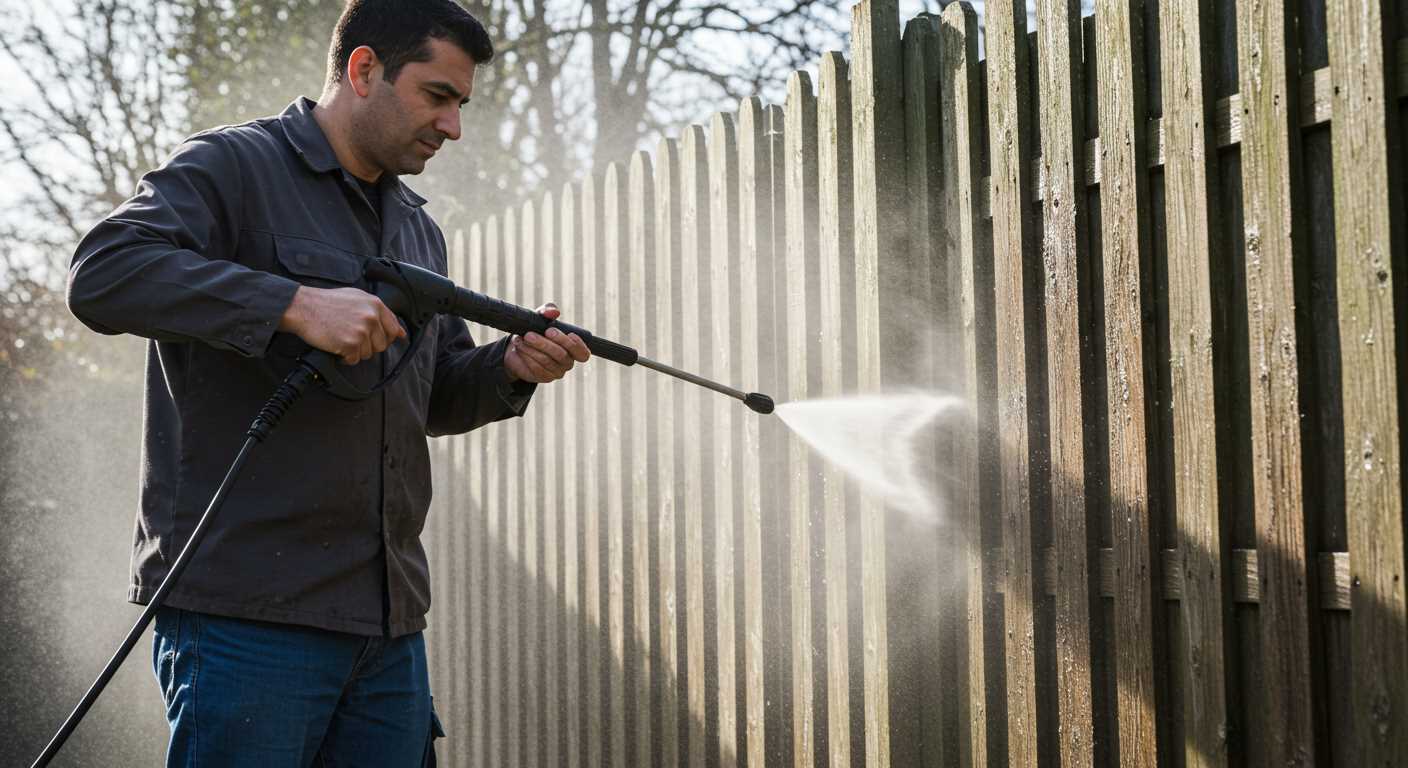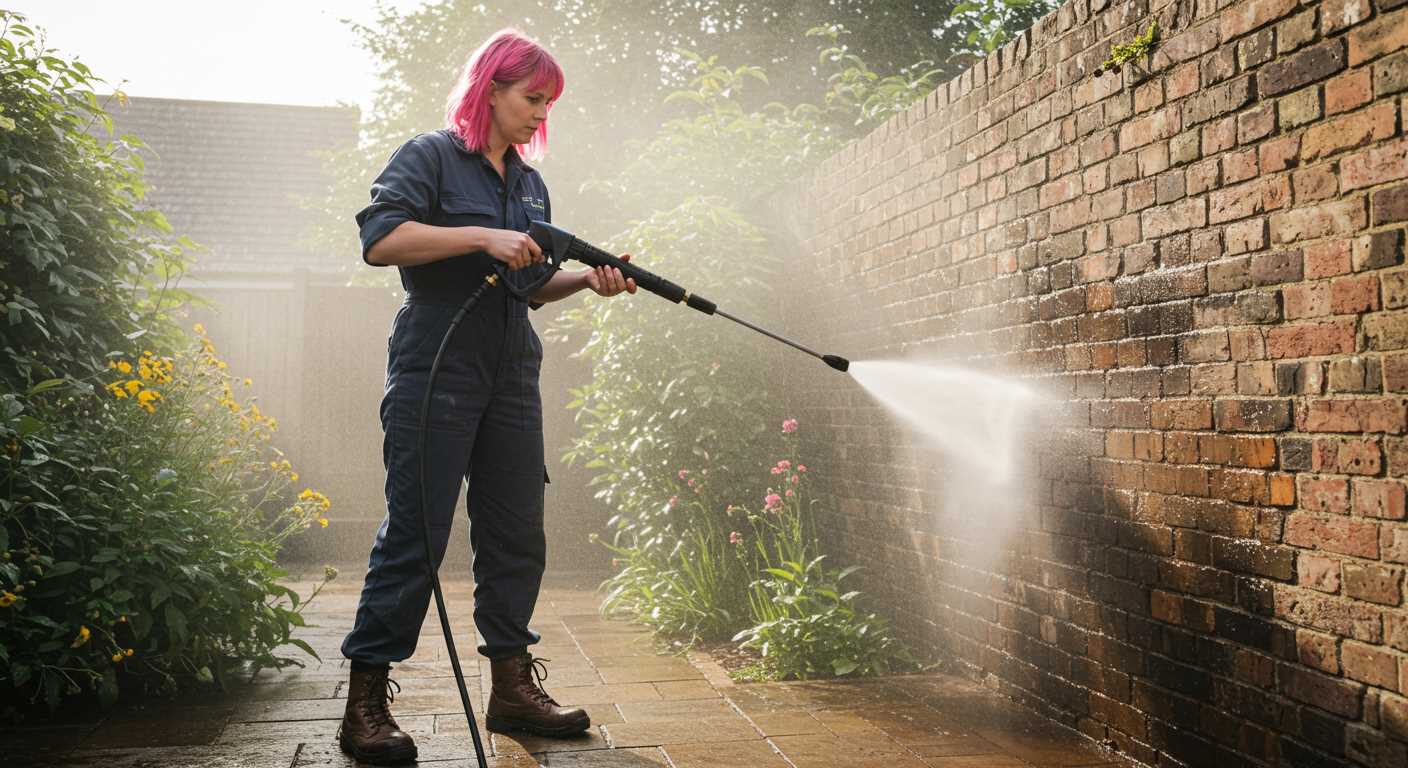

First, ensure your device is placed on a stable surface and that all components are securely fitted. Connect the water supply and check for leaks at the hose and connections before proceeding. Safety is paramount; wearing protective gear is advisable.
Next, locate the fuel valve, usually found near the fuel tank. Turn it to the ‘open’ position. On most models, there’s a primer bulb; press it several times to draw fuel into the carburettor, which prepares the system for ignition.
Now, engage the choke if the unit features one, as this helps with starting in cold conditions. Find the ignition switch and turn it on. If your model uses a recoil starter, pull the starter rope firmly until you feel resistance, then pull again sharply to ignite the power unit. For electric starters, simply press the start button.
Once the motor fires up, adjust the choke back to the ‘run’ position and allow it to warm up for a minute before extending use. You’re now ready to tackle various cleaning tasks with ease.
How to Safely Engage the Cleaning Equipment
Before engaging the machinery, ensure the fuel tank is filled with the appropriate petrol blend. Use fresh fuel to avoid starting issues. Prior to ignition, check the oil level; the dipstick should indicate adequate levels, avoiding damage to internal components.
Ensure that the nozzle is securely connected to the lance, preventing water leakage. The appliance should be placed on a flat, stable surface away from clutter to enhance safety during operation.
While gripping the handle firmly, locate the choke valve; adjust it to the ‘closed’ position if the engine is cold. For warmer engines, leave it in the ‘open’ position. This adjustment optimises the fuel-air mixture during the initial fire-up.
Next, activate the ignition switch, confirming that it is set to the ‘on’ position. For models with a pull-start mechanism, ensure the recoil starter is fully extended. Firmly grasp the handle and give a swift pull to initiate ignition. If it fails to fire after several attempts, check for fuel flow or potential blockages in the fuel line.
Once the machinery roars to life, gradually adjust the throttle to a higher setting for full operational capacity. Allow it to idle for a brief period, facilitating a smooth transition to optimal performance levels.
Finally, check for leaks and ensure the pressure gauge indicates proper levels. Now you’re ready to make your cleaning tasks straightforward and efficient.
Ensure Correct Fuel Type is Used
Verify that you’re using the recommended fuel type for your machine. Most gas-powered units require unleaded petrol with a minimum octane rating, typically 87 or higher. Check the owner’s manual for specific requirements.
Avoid using old or contaminated fuel, as it can lead to poor performance or damage the components. If the fuel has been stored for a while, consider replacing it with fresh petrol. Mixing two-stroke oil with petrol is essential if the model specifies such a blend–adhere to the manufacturer’s oil-to-fuel ratio guidelines.
In some cases, ethanol-blended fuels can cause issues in small engines. Use fuel that contains less than 10% ethanol, if possible, to prevent potential buildup in the fuel system.
Be mindful of the fuel filter. A clogged filter can impede flow and affect ignition. Regularly check and replace it as per the maintenance schedule in your manual.
Check Oil Level and Quality

Regularly check the oil level before operating any cleaning machinery. Ensure the oil is at the recommended level for smooth operation.
To assess the oil quality:
- Remove the dipstick from the oil reservoir.
- Wipe it clean with a cloth and reinsert it, then remove again to check the level.
- Inspect the oil’s colour and clarity; it should be a clear amber colour, rather than dark or muddy.
If the oil appears contaminated or has a burnt smell, it needs to be replaced. Use the type specified in the user manual.
Monitor the oil level regularly, as a low level can lead to overheating and equipment damage. If using the machine frequently, consider checking the oil daily.
Always dispose of used oil properly. Many local automotive shops offer recycling services.
Inspect and Clean Air Filter
Regular checks and cleaning of the air filter are paramount for optimal performance. Begin by locating the air filter compartment, often situated near the carburettor. Remove the filter, and closely examine it for dirt, debris, or any signs of wear. If the filter appears excessively dirty, it’s advisable to clean it thoroughly. Use compressed air to blow out any loose particles and then rinse it with soap and water. Ensure it dries completely before reinstalling.
Replacement Considerations

If the air filter shows significant damage or excessive clogging that cleaning cannot remedy, replace it immediately. Always opt for a filter that matches the specifications of the model in use to ensure proper fit and function.
Regular Maintenance Schedule
Implement a maintenance schedule, inspecting the air filter after every 10 hours of operation. This routine will extend the lifespan of the motor and enhance efficiency, safeguarding against any unnecessary issues during use.
Set Up the Pressure Washer Properly
Position the unit on a flat, stable surface to prevent tipping during operation. Ensure that the placement allows for adequate ventilation and is free from obstructions that could impede airflow.
Connect the high-pressure hose securely to the spray gun and the water inlet. For optimal performance, use a quick-disconnect fitting. Inspect the hose for any signs of wear or damage prior to connecting.
Before attaching the water source, make sure the drain valve is closed. This ensures that water flows only through the designated paths, reducing the risk of internal damage. Use a garden hose of appropriate length and diameter, ensuring it is not kinked or damaged. A diameter of 5/8 inch is typically recommended.
Once the water supply is connected, turn on the water to fill the pump completely. Keeping the gun trigger pulled activates the water flow and eliminates air from the system. This step is vital for avoiding cavitation, which can harm the pump.
After establishing water flow, check all fittings and connections for leaks. Tighten any connections that are loose. A leak can cause pressure loss and affect the unit’s performance significantly.
To ensure the machine operates safely, inspect the power cord for frays or damage. Never use a device with a compromised electrical cord. Plug the unit into a grounded outlet with the appropriate voltage as indicated on the label.
Finally, select the correct nozzle tip for the task at hand. Different nozzles provide differing spray patterns and pressures, making them suitable for various surfaces and cleaning applications. Refer to the manufacturer’s guidelines for the recommended nozzle for your specific job.
| Nozzle Type | Spray Pattern | Use Cases |
|---|---|---|
| 0 degrees | Focused stream | Heavy-duty cleaning of concrete, removing stubborn stains |
| 15 degrees | Narrow fan | Cleaning metal, removing paint or other tough grime |
| 25 degrees | Medium fan | General cleaning of decks, driveways, and vehicles |
| 40 degrees | Wide fan | Gentle cleaning of delicate surfaces, such as windows or painted surfaces |
| Soap nozzle | Detergent application | Applying soap or cleaning solutions for enhanced cleaning |
Engage the Choke Before Starting
Always set the choke to the “closed” position for cold starts. This action limits airflow into the carburettor, enriching the fuel mixture and making ignition easier. If the unit has a dual-position choke, ensure it’s fully engaged to facilitate the combustion process. After a few attempts or once the machine warms up, switch the choke to the “open” position. This will help maintain optimal engine performance as it runs. Overuse of the choke can lead to flooding the motor, so monitor the starting condition carefully.
It’s advisable to pull the recoil starter gently while keeping an eye on the choke position. If the motor doesn’t catch after a few attempts, re-evaluate the choke setting and fuel supply to avoid unnecessary strain on the components. Familiarise yourself with the specific model’s recommendations as choke mechanisms can differ. This small adjustment can significantly ease ignition and lead to a more responsive and reliable performance.
By consistently using the choke correctly, you can enhance the longevity and efficiency of your equipment. This minor yet crucial step can ensure smoother, trouble-free operation each time you engage with your cleaning device.
Use Starter Procedure for Specific Engine Type
Refer to the owner’s manual for tailored instructions based on your particular model, as starting procedures differ significantly among manufacturers and engine types. Here are general guidelines based on commonly found engine categories:
4-Stroke Engines
- Ensure the fuel is suitable for 4-stroke systems.
- Check that the oil level is adequate, and the oil is of good quality.
- Engage the choke only if required; some models do not require a choke for ignition.
- After pulling the recoil starter, allow the motor to warm up for a few minutes before use.
2-Stroke Engines
- Mix fuel with oil in the correct ratio as specified by the manufacturer.
- Fill the fuel tank carefully, avoiding spills.
- Utilise the choke if the environment is cold; otherwise, keep it open.
- Pull the starter cord firmly until the equipment fires up. It may take a few attempts.
Consider environmental factors that might affect ignition. If it’s colder, priming the fuel bulb can help in ensuring the carburettor gets enough fuel. Always keep safety gear on hand and stand clear of the output during ignition.
Address Common Starting Issues and Solutions

If your equipment isn’t igniting, begin with verifying the fuel system. Old fuel can cause malfunction. Empty the tank and use fresh petrol, ensuring it’s mixed correctly if needed. Clean the fuel filter to eliminate any blockages.
Inspect the spark plug for wear or carbon buildup. A faulty spark plug is often the culprit in ignition problems. Replace it if the ceramic is cracked or the electrode is worn down.
Next, assess battery connections if your unit has an electric start. Ensure the terminals are tight and free from corrosion. A loose or corroded connection can disrupt the power needed for ignition.
Inspect the ignition switch functionality. If it’s defective, it may need replacement. Check for continuity using a multimeter to identify issues.
If the unit cranks but doesn’t fire, check for fuel flow issues. A clogged fuel line can prevent fuel from reaching the carburettor. Clear any dirt or debris from the lines and fittings.
Evaluate the role of the choke. If it’s improperly set, the engine can struggle to start. Adjust it according to the manufacturer’s guidelines to create the correct air-fuel mixture.
Cold weather can also impact performance. Use a suitable winter-grade oil for easier cranking in lower temperatures. If possible, store the unit in a warmer place before use.
Last, if all else fails, consult the user manual for troubleshooting steps specific to your model. Each brand may have unique quirks that require attention.







